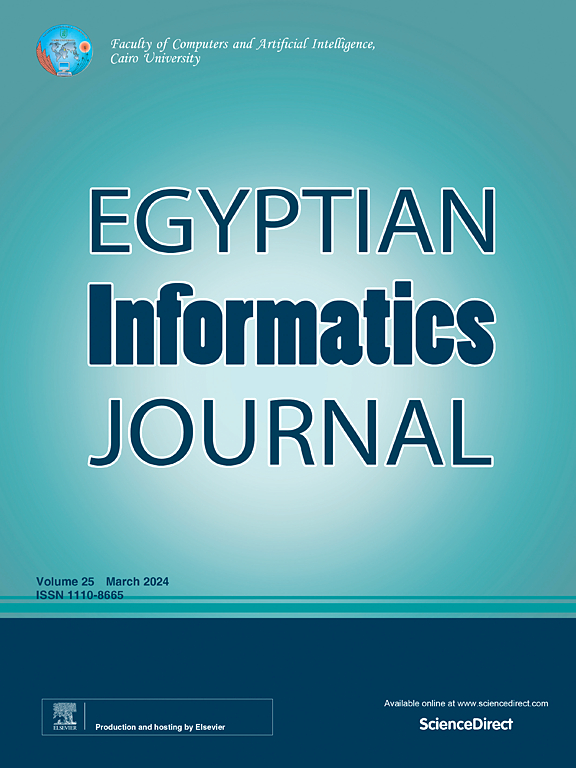Optimizing traffic safety message dissemination and resource allocation using adaptive deep reinforcement learning in fog-enabled internet of vehicles network
IF 4.3
3区 计算机科学
Q1 COMPUTER SCIENCE, ARTIFICIAL INTELLIGENCE
引用次数: 0
Abstract
The rapid transformation of the Internet of Vehicles (IoV) necessitates robust solutions to ensure traffic safety, optimal resource utilization, and reliable data dissemination. However, traffic safety message dissemination is hindered by fluctuating traffic densities, network congestion, and message priorities, while existing systems exhibit minimal adaptation to real-time load variations due to delays and inconsistent message transmission. In this study, we propose a novel FOG-DRL based framework that integrates Deep Reinforcement Learning (DRL) and Fog Computing (FC) to address these vehicular network challenges. A Vehicular Ad-hoc Network (VANET) is constructed, whereby the system exploits DRLs (Deep Q-Learning (DQN) and Proximal Policy Optimization (PPO)) for offloading, optimal resource allocation, and equitable task distribution within the network. Fog Computing is utilized for larger data with less latency while keeping the communication overhead lower. The DRL-based second adaptive algorithm will be in charge of optimizing the network’s performance and alleviating congestion. Energy consumption is minimized using third DRL-based optimization methods, with a Round Robin algorithm for resource allocation working within the limits of performance required for establishing effective allocation. Besides, the system incorporates mechanisms to prevent the dissemination of fraudulent messages in vehicle-to-vehicle (IoV) and vehicle-to-infrastructure (V2I) interactions, which ensure data integrity and reliability. Comprehensive performance evaluations are conducted, including metrics such as energy usage, latency, resource utilization, and throughput to varying numbers of IoV nodes. This work lays the foundation to develop safer and more competent transportation systems to meet the rising demands of IoV networking through advanced AI and distributed computing interventions.
基于自适应深度强化学习的雾化车联网交通安全信息传播与资源分配优化
随着车联网的快速发展,需要强大的解决方案来确保交通安全、优化资源利用和可靠的数据传播。然而,交通安全信息的传播受到交通密度波动、网络拥塞和信息优先级的阻碍,而由于信息传输的延迟和不一致,现有系统对实时负载变化的适应能力最低。在本研究中,我们提出了一种新的基于Fog -DRL的框架,该框架集成了深度强化学习(DRL)和雾计算(FC)来解决这些车辆网络挑战。基于深度Q-Learning (Deep Q-Learning, DQN)和近端策略优化(Proximal Policy Optimization, PPO)技术,构建了车辆自组网VANET (Vehicular Ad-hoc Network)。雾计算用于更大的数据和更少的延迟,同时保持较低的通信开销。基于drl的第二种自适应算法将负责优化网络性能和缓解拥塞。使用第三种基于drl的优化方法将能源消耗最小化,并使用轮询算法在建立有效分配所需的性能限制内进行资源分配。此外,该系统还集成了防止在车对车(IoV)和车对基础设施(V2I)交互中传播欺诈信息的机制,确保了数据的完整性和可靠性。对不同数量的车联网节点进行综合性能评估,包括能耗、时延、资源利用率、吞吐量等指标。这项工作为开发更安全、更有能力的交通系统奠定了基础,通过先进的人工智能和分布式计算干预来满足物联网日益增长的需求。
本文章由计算机程序翻译,如有差异,请以英文原文为准。
求助全文
约1分钟内获得全文
求助全文
来源期刊

Egyptian Informatics Journal
Decision Sciences-Management Science and Operations Research
CiteScore
11.10
自引率
1.90%
发文量
59
审稿时长
110 days
期刊介绍:
The Egyptian Informatics Journal is published by the Faculty of Computers and Artificial Intelligence, Cairo University. This Journal provides a forum for the state-of-the-art research and development in the fields of computing, including computer sciences, information technologies, information systems, operations research and decision support. Innovative and not-previously-published work in subjects covered by the Journal is encouraged to be submitted, whether from academic, research or commercial sources.
 求助内容:
求助内容: 应助结果提醒方式:
应助结果提醒方式:


